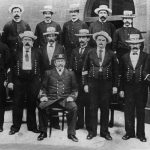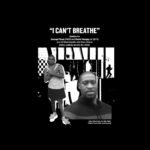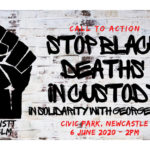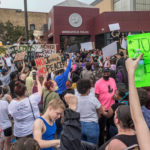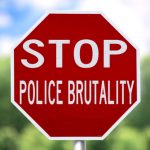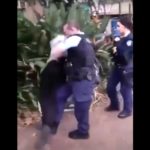Australian Police: The History of Systemic Brutality Continues to This Day
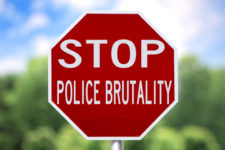
Citizens have mobilised across the United States to protest the system in that country, which led four Minneapolis police officers to kill African American man George Floyd on 25 May in full view of the public, as if it was their duty.
The current demonstrations mark the largest in the US since the 1960s civil rights rallies.
And the point has been made that the reason why African American people are more likely to be killed by US state police forces is that these institutions were established to directly target and control their communities.
The establishment of police forces in the United States and the United Kingdom took place during the 19th century. And rather than their focus be on the protection of the public, they were a mechanism designed to protect the interests of the state and the wealthy elite.
So, given this context, it should be no surprise that as the invading British colonisers began setting up their own police forces on this continent, the emphasis was on targeting First Nations peoples, who were systematically being dispossessed from their lands.
And the proof that racial prejudice is ingrained in local law enforcement and criminal justice systems is plain to see, when you consider that 29 percent of the adult Australian inmate population is made up of First Nations people, yet they only account for less than 3 percent of the general populace.
Built upon slavery
“To say that the US state police forces have been founded on racist violence is simply to acknowledge historical facts in their development,” said Melbourne Law School senior fellow Amanda Porter. “It’s a pattern that continues into the present.”
The academic further pointed out that centralised police departments began to form in the first part of the 19th century, beginning in Boston. However, in the south of the US, early policing models, known as slave patrols, had been developing during the 1700s.
“Slave patrols were responsible for controlling and punishing runaway slaves,” Porter explained. “Even after they were formally dissolved following the Civil War, law enforcement agencies continued to police Black Code laws and Jim Crow laws until 1968.”
In the 1880s, Jim Crow laws were enacted in states right across the south and north of the country, establishing a formal system of racial segregation. These laws were enforced by the police. And black people who failed to follow them were often subjected to brutal policing.
And while these apartheid laws came to an end in the late 1960s, the often violent overpolicing of black communities never has.
Porter points to the 1991 beating of Rodney King at the hands of LAPD officers, the 2014 shooting of Mike Brown in Ferguson, and the killing of Eric Garner by NYPD officers that same year.
Settler colonial brutality
“Australian police forces were similarly founded on violence: racist violence, imperial violence and settler colonial violence,” Ms Porter told Sydney Criminal Lawyers. “Some of the earliest forms of state policing were established with the specific purpose of extending the colonial frontier.”
And according to the Brinja Yuin descendant, the early policing forces charged with broadening colonial boundaries weren’t modelled upon British community policing methods, but rather “the paramilitary police model, which oversaw the 19th century oppression of Ireland”.
As policing became more established in the colony of NSW, the key institutions were the Border Police, the Mounted Police and the Native Police. “All three organisations,” Porter said, “were known for their extreme violence and savage acts of brutality.”
Established in 1825, one of the main functions of the NSW Mounted Police was quelling the Aboriginal resistance. Still used to police inner city Sydney, this unit of the NSW Police Force was once involved in the wholesale massacre of First Nations people.
It’s systemic
Porter outlined that in this country, as in the US, the history of policing “is inextricably linked with histories of colonialism, imperialism, racist violence and capitalism and you see this violence play out in overt and covert ways today”.
The Indigenous programs senior fellow cited the 1989 fatal police shooting of First Nations man David Gundy in his Marrickville home and Ngaanyatjarra elder Mr Ward, who was left to “cook to death” in the back of a private security firm’s prison van in the Western Australian outback in 2008.
A Royal Commission into Aboriginal deaths in custody was launched in the late 1980s. However, since it handed down its recommendations there have been 432 more custody deaths involving First Nations people, and not one police officer or prison guard has ever been convicted.
“In addition to fatal shootings and deaths in police custody,” Ms Porter emphasised, “Aboriginal people are routinely discriminated against in other ways.”
A clear example of this prejudicial treatment is the Suspect Targeting Management Plan (STMP), which is a secret blacklist held by the NSW police that contains the names of individuals, who are targeted for increased surveillance.
The 2017 Policing Young People report found that the data from five local area commands revealed that over a two year period, 54 percent of STMP targets were made up of First Nations people, despite them making up only 3.4 percent of the overall NSW population.
A cop’s bad day
One NSW police officer took it upon himself to exemplify why advocates have been calling out for Australians to not only express their rage about George Floyd’s death, but also reflect on the prejudicial policing methods applied to First Nations people in this country.
Footage captured last Monday shows this police officer pin the arms of a 16-year-old Aboriginal boy behind his back, before kicking his feet out from under him and slamming him face first into the ground in a Surry Hills park.
This footage soon went viral, which led NSW police commissioner Mick Fuller to have to address the incident on local radio. And the head of this state’s law enforcement body dismissed the seriousness of the police assault, putting it down to the officer having “a bad day”.
“This response is fairly reflective of the “leadership” of police commissioners in response to police complaints,” Ms Porter made clear. “It goes without saying that this is against the values and principles embodied in recommendation 226 of the Royal Commission.”
This recommendation of the Aboriginal deaths in custody investigation sets out that complaints about police should be investigated “by a body or bodies totally independent of police services”.
“Sometimes I wonder if Mick Fuller, or any of the other commissioners, have even read the recommendations,” the academic concluded.


